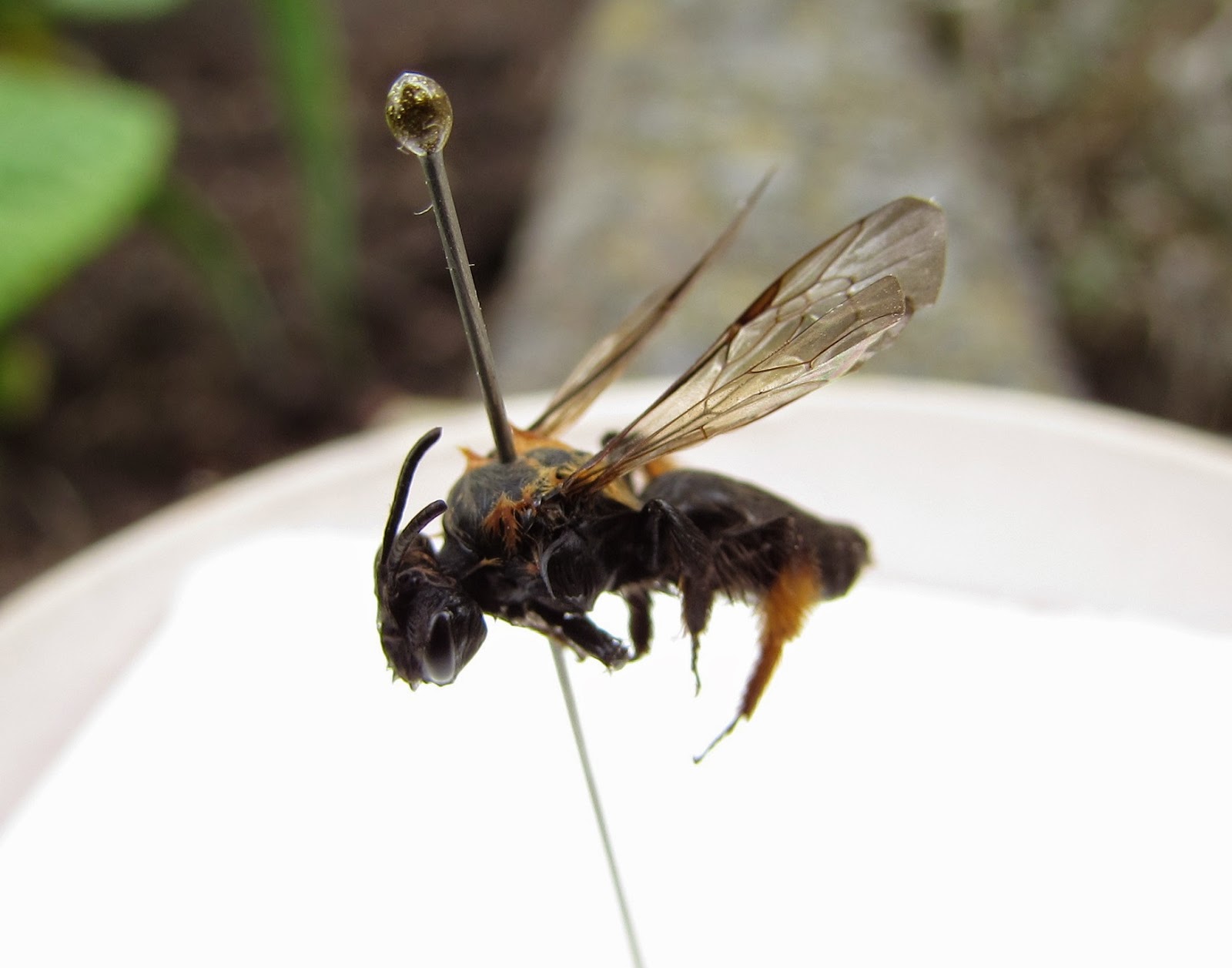My 5th weekend workshop at the British Entomological and Natural History Society (I know, I should just move right in) and I'm realising the best thing about these meetings (aside from the biscuits) is overhearing and chatting with such a diverse group of people about explorations into invertebrate identification.
BENHS HQ - Dinton Pastures workshop desks with light microscopes
Mike Edwards of BWARS led this course on Hymenoptera aculeata (bees, wasps, ants and sawflies), beginning with a presentation on their fantastic diversity and life strategies in the UK. These insects are broadly classified at having two pairs of clear wings (4 in total), joined by hooks and with an ovipositor at the rear which is modified into a 'stinger'.
The walls are lined with drawers like this filled with carefully preserved and labelled specimens
Mike is an incredibly enthusiastic entomologist, one of many people trying to encourage a new generation of biological recorders. He asked us to bring along our specimens, so I brought some solitary bees from Gatwick, including one of my 'zom-bees' which came back to life after removing it from the fridge. I've subsequently learned a few tips on how NOT to preserve specimens...
...such as storing things in alcohol and then writing the labels in ink
Alcohol will also mat the hairs of insects which can be an important identification feature.
Plus its a little undignified. This was an Andrena solitary bee, species is probably clarkella
Just to make a brief point here: I don't collect invertebrate specimens for fun or for ownership (I'm no Pokémon master). Present day Entomologists collect specimens in order to identify a species, and because certain features can only be practically observed when something is no longer moving. You can read more about the entomology code of conduct here:
Identification keys are quite like the 'Choose Your Own Adventure' books, in that you are presented with options and your choice tells you which page to go to. Mike has recently been updating and simplifying a key to British bees, this is a quick demo of part of it...
For the pics I've used a smart phone down the lense of a microscope, but better naturalists than me will sketch features by hand as this helps with learning!
How to work out if your bee is male or female...
This female had 12 antennal segments...
...and 6 visible tergites (segments) on its rear end
So we know it is female, onto Key 2...
I can see 3 submarginal cells, slightly out of focus
Over to couplet 15...
Surface of eyes are definitely not hairy, and the marginal cell on the wing was relatively broad...
Over to couplet 16...
Couldn't see the tongue, but the wing vein was straight, plus the inner margin of the eyes are more straight than concave; over to 17...
I'm sure you get the jist! This one eventually keyed out to the genus Nomada, which is a type of Cuckoo Bee. These are common parasites of other solitary bees, laying their own eggs which after hatching then eat the larvae and food stores.
Now really is a good time to be getting into wildlife recording; with social media and online recources, everything is so much more accessible. Also, being able to share experiences with people at workshops or online means the entomological pursuit is no longer such an isolating one!
Many thanks again to Mike and everyone at BENHS who helps to put these workshops together.






















